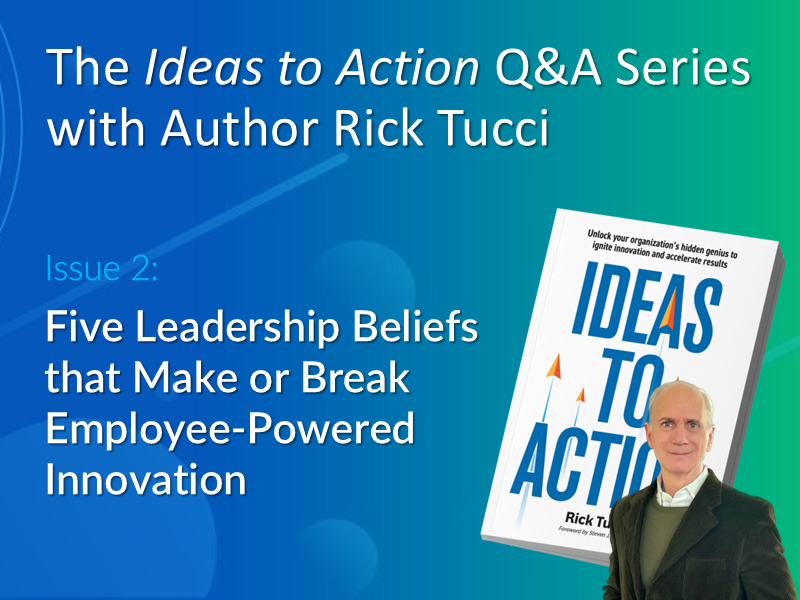Q: What do you mean by “employee-powered innovation”—and why does it require a different leadership mindset?
Rick Tucci:
Employee-powered innovation starts with a simple truth: frontline employees know things leaders don’t. They see the gaps, the workarounds, and the untapped potential every day. But if your culture doesn’t support idea-sharing—or if your systems don’t move those ideas into action—nothing changes. That’s where mindset matters. Over the years, I’ve learned that five core leadership beliefs consistently separate those who unlock innovation from those who stall out.
Q: What’s the first belief that sets this approach apart?
Rick Tucci:
Start where the energy is. Too often, leaders pick a change goal and then try to force it through the organization. But if you want fast, sustained momentum, you need to start with the people who are already motivated to make things better—those who’ve been thinking about improvements for weeks, months, even years. That early energy fuels ownership. And ownership fuels results.
Q: How do you make sure that energy turns into progress, not frustration?
Rick Tucci:
That’s where the second belief comes in: Empower effective action. Employees need more than permission—they need tools, time, and a clear process. You can’t just say, “We value your input.” You have to show them how to move from idea to implementation. And when they see their ideas producing real results? That’s when commitment deepens and leadership starts to emerge from every corner of the team.
Q: So why do so many engagement efforts fail, even when leaders seem motivated?
Rick Tucci:
Because they ignore the third belief: Embrace simplicity. I’ve seen so many well-intentioned programs collapse under the weight of complexity. Fancy digital platforms, endless training sessions, or five-layer approval chains—they kill momentum. What employees need is intuitive, clear, repeatable steps. That’s how you build confidence. That’s how you scale.
Q: You also talk about “speed to results.” Why is speed such a priority?
Rick Tucci:
Because both employee motivation and leadership attention are perishable. That’s belief number four: Prioritize speed to results. Long initiatives with vague outcomes erode trust. Instead, we focus on short sprints—tight cycles of planning, testing, and learning. Teams start seeing wins in days or weeks, not quarters. And that changes everything.
Q: The last belief you list is “Make a leap of faith.” What does that really mean?
Rick Tucci:
It means trusting your people before you’ve seen the proof. Too many leaders hold back, waiting for data or guarantees. But real innovation demands trust. If you believe your employees have insight—and you create a safe space for it to emerge—they will prove you right.
Here’s the thing: employees can tell when leaders don’t really believe in them. When leaders signal hesitation or doubt, employees respond in kind—they hold back, lose confidence, and perform to a lower standard. You get what you signal. Either you believe, or you don’t. There’s no in-between if you want results from employee-powered innovation. That leap of faith isn’t just a nice gesture—it’s the spark that ignites action.
Q: How do these five beliefs connect to the Ideas-to-Action Process itself?
Rick Tucci:
They’re the foundation. Without them, the process is just another set of tools. But with these beliefs in place, the tools actually work. Employees engage. Ideas flow. Results happen fast. And leaders discover they’ve had the solution inside the organization all along. Next week, we’ll unpack the five steps of the process and show how these beliefs come to life.
Your Next Step?
This is Episode 2 of the Ideas to Action Q&A Series with author Rick Tucci—a chapter-by-chapter journey through the mindset, method, and results of employee-powered innovation.
- Missed Episode 1? Read it here.
- Want to go deeper? Get the book on Amazon.
- Ready to explore options for putting the Ideas-to-Action process to work? www.ideastoactionplatform.com


